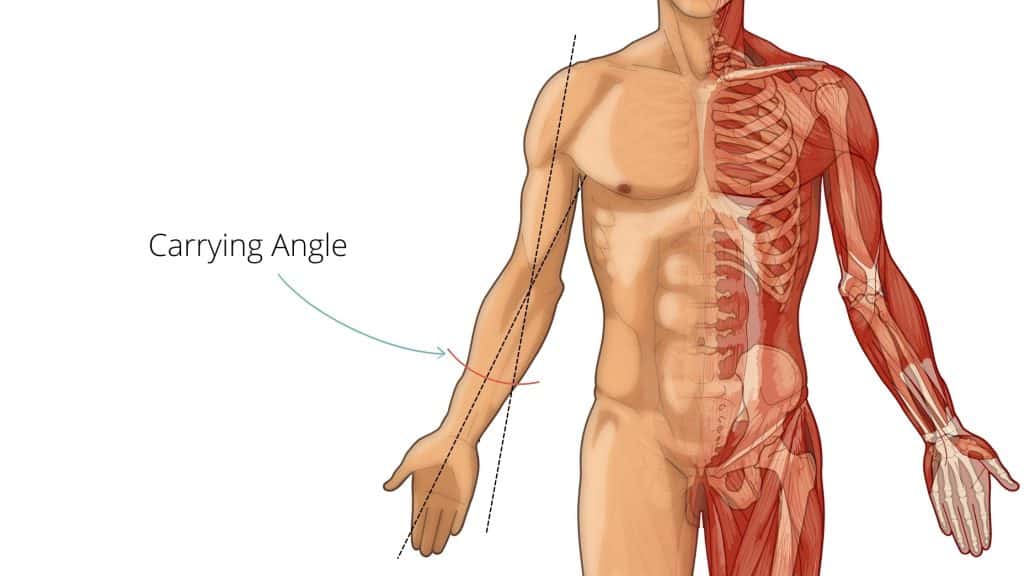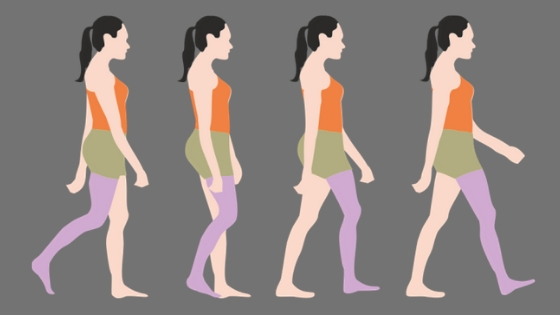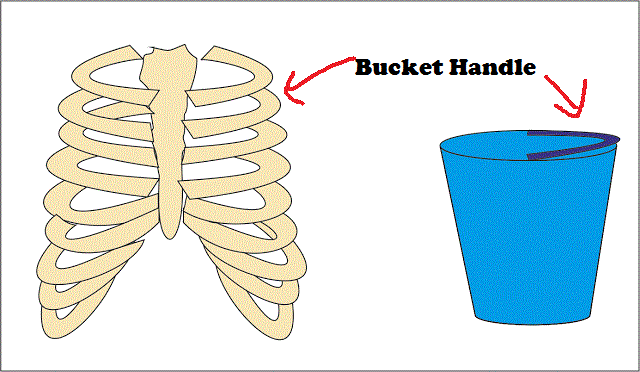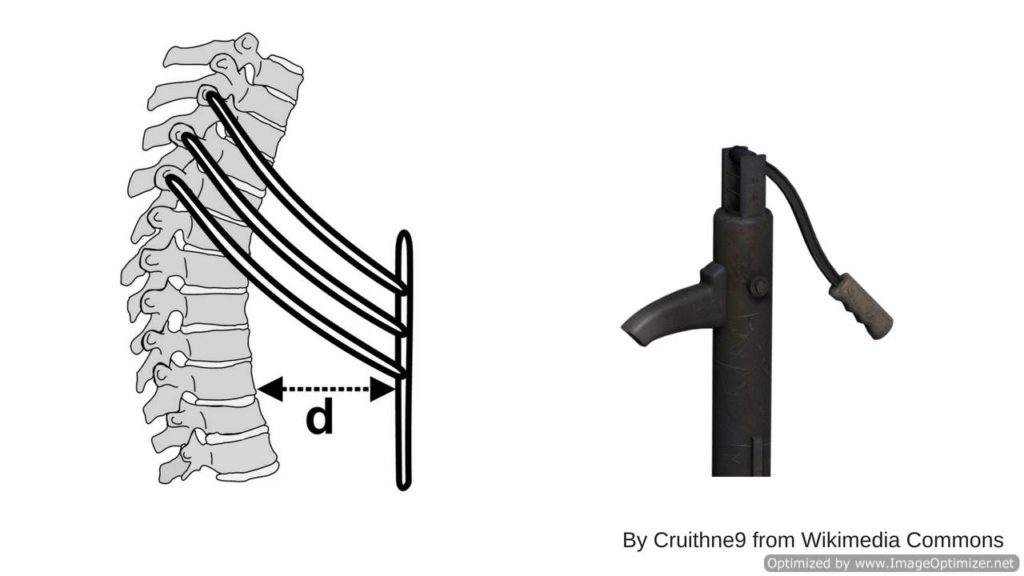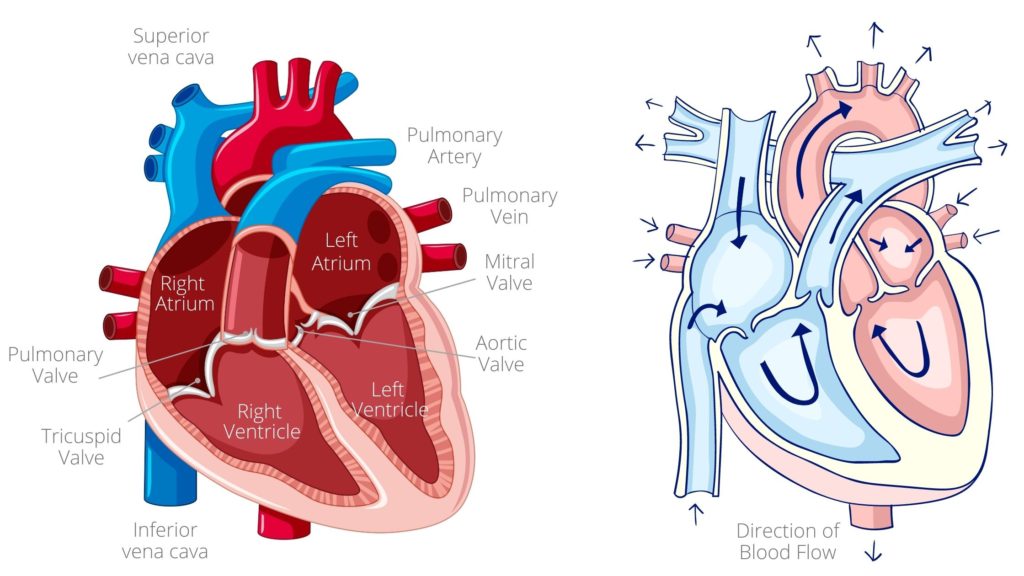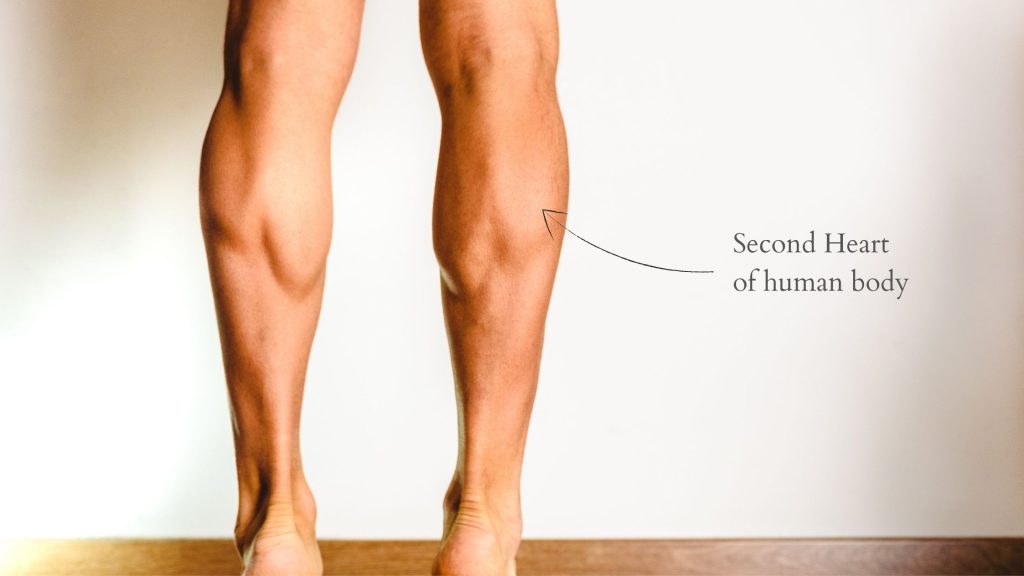
As the chilly season approaches, many of us tend to experience a surge in neck pain due to the dropping temperature. To help you combat this discomfort, I’m here to guide you through some effective exercises that can relieve neck stiffness and keep you warm. Remember, staying active, maintaining warmth, and incorporating specific neck exercises can significantly minimise neck pain during cold weather.
Managing severe neck stiffness and pain
If you’re experiencing neck stiffness and pain, it’s important to address it promptly to avoid further discomfort. One of the most effective ways to alleviate the pain is by applying hot compression. But, let me tell you a very effective tip for this. So, before you apply hot, apply a good pain ointment around your neck. Gently massage the pain balm into the affected area and let it absorb for at least 10 minutes. This will help soothe the pain and reduce the inflammation.
Next, you can use a hot pack to relax the muscles surrounding your neck. You can use any heating agent, like an electric hot water bag, hot water bottle or infrared lamp. The heat from the pack will help improve blood circulation and promote muscle relaxation. Place the hot pack on your neck and leave it on for 15-20 minutes.
This combination of ointment and hot packs can work wonders in easing severe pain and promoting muscle relaxation. Remember, if your neck pain persists or worsens, it’s important to seek medical advice from a qualified healthcare professional. Don’t ignore the pain, and take care of your health!
Neck pain exercises
After the severe neck pain subsides, it is important to focus on exercises. Here are the exercises that we recommend.
1) Neck stretching Exercises
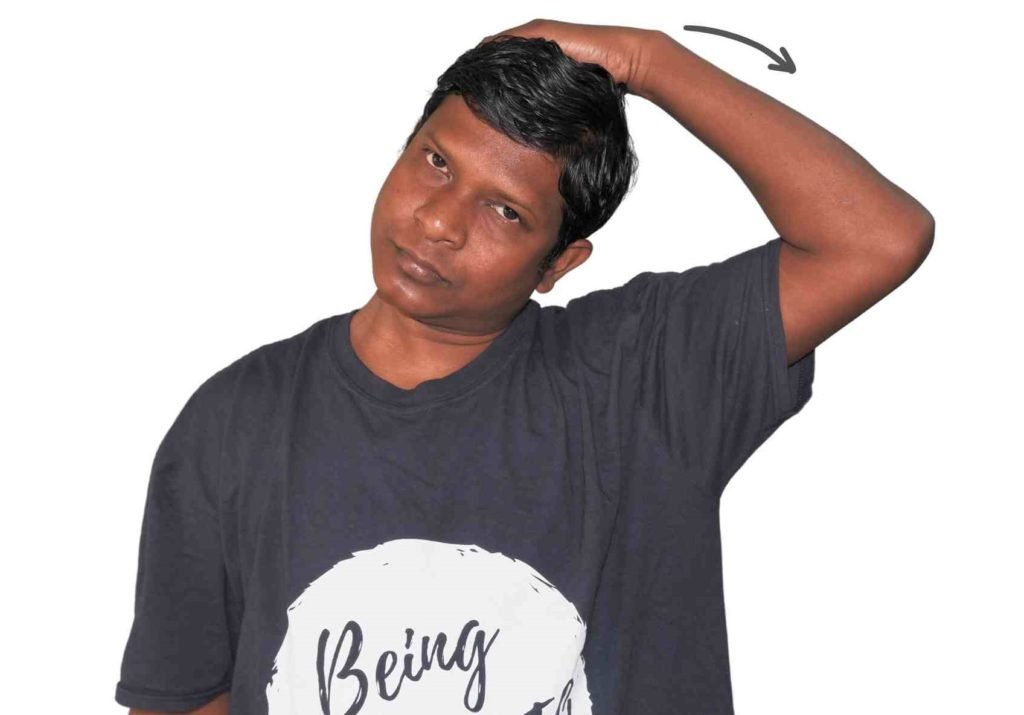
Once you begin to feel a slight reduction in pain, it is recommended to initiate stretching exercises to help enhance flexibility and reduce stiffness. One simple stretching exercise that can be done is for the left and right sides of your neck.
- To stretch the left side of your neck, begin by sitting up straight and slowly tilting your head to the right side.
- With your right hand, gently grasp the left side of your head and apply a gentle pulling force until you feel a stretch in the left side of your neck.
- Hold this position for at least 30 seconds and then release. Repeat this stretch three times.
- To stretch the right side of your neck, repeat the same steps as above, but this time, tilt your head to the left side use your left hand to grasp the right side of your head and apply a gentle pulling force.
- Hold this position for at least 30 seconds and then release.
- Repeat this stretch three times.
2) Cross-arm stretch for upper back pain
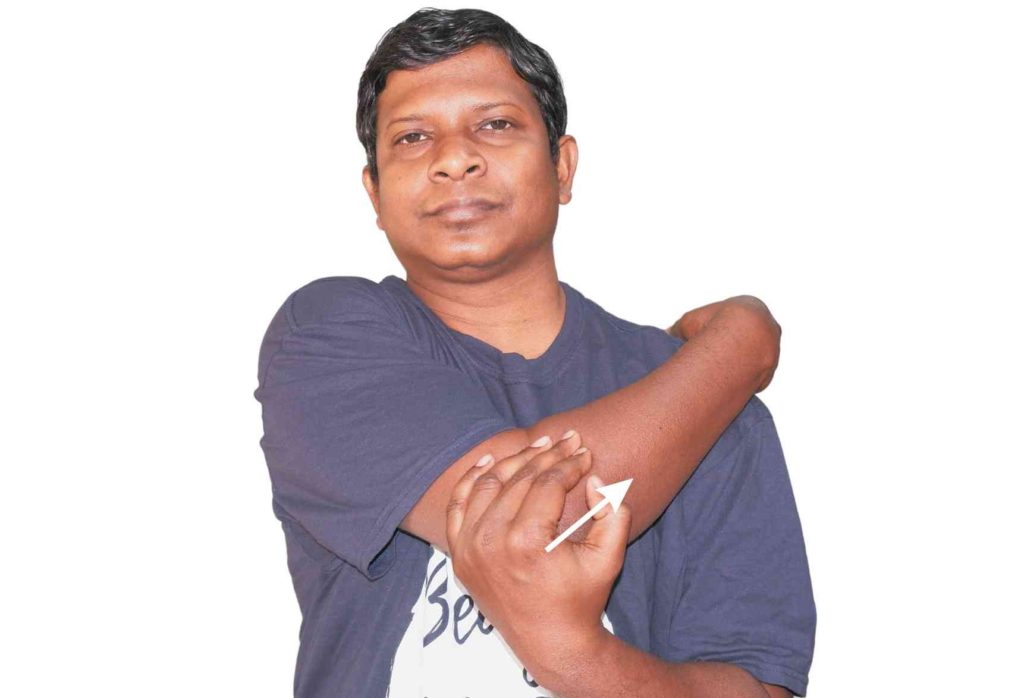
One exercise that can help alleviate neck and back pain is the cross-arm stretch. To perform this exercise:
- Start by standing up straight with your feet shoulder-width apart.
- Next, bring your right arm across your chest and place your left hand on your right elbow.
- Gently pull your right arm towards your chest and hold for 10 seconds. You should feel a stretch in your shoulder blade muscles.
- Repeat this stretch on the other side by bringing your left arm across your chest and placing your right hand on your left elbow.
- Remember to hold this stretch for 10 seconds as well.
- Repeat the entire exercise at least two to three times on each side. This exercise can help promote overall relaxation and reduce stiffness in the back.
3) Shoulder Relaxation Techniques
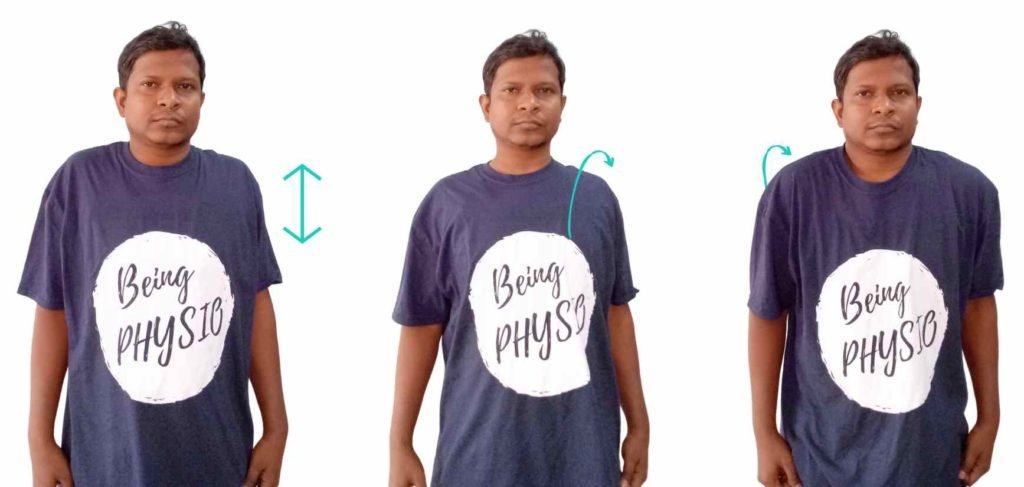
Regarding neck pain, the shoulders can play a significant role, and it’s essential to keep them relaxed. One exercise that can help with this is the shoulder shrug.
Shoulder shrug exercise
The shoulder shrug exercise is a simple yet effective way to relieve tension and improve mobility in your neck and shoulders.
- To perform this exercise, start by standing or sitting up straight with your arms at your sides.
- Take a deep breath in, and slowly lift your shoulders towards your ears as you exhale.
- Hold this position briefly, feeling your neck and shoulders stretch.
- Then, slowly lower your shoulders back down to their starting position as you inhale.
- Repeat this movement for 10 to 15 repetitions, keeping your neck and shoulder muscles relaxed throughout the exercise.
You can also add resistance to this exercise by holding weights or a resistance band. However, if you’re new to this exercise, starting with your body weight is best until you feel comfortable with the movement. Remember to take it slow, listen to your body, and always stop if you feel pain or discomfort.
Shoulder rotation exercise for neck pain
To perform the exercise for loosening up your shoulder muscles,
- Start by sitting or standing up straight with your arms relaxed.
- Then, raise both shoulders towards your ears as high as you can, hold for a few seconds, and then release them back down to their starting position.
- Next, rotate your shoulders forward in a circular motion, keeping them relaxed and not hunched up towards your ears.
- After a few repetitions, switch to rotating your shoulders backwards in a circular motion.
- This exercise can be repeated for a few sets of 10-15 reps, gradually increasing the number of reps as you become more comfortable with the exercise over time.
4) Enhancing Neck Range of Motion
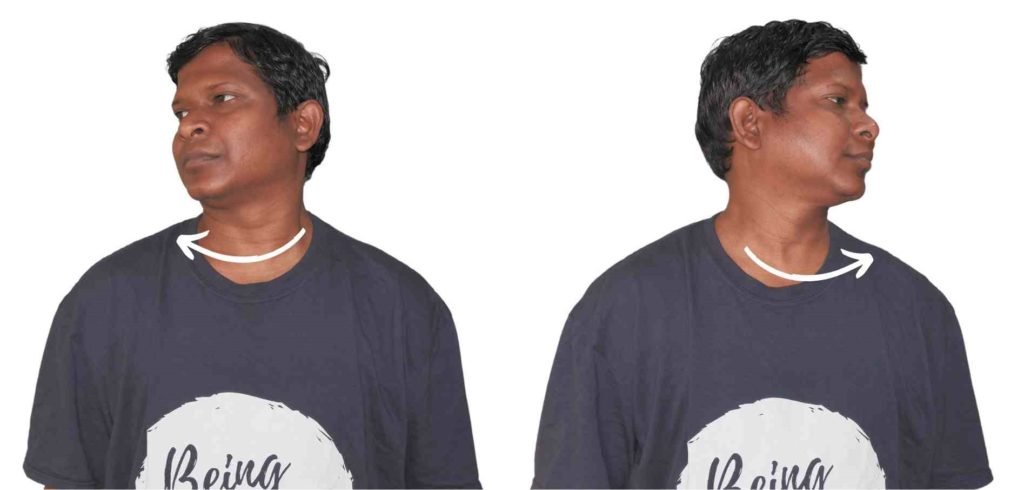
To perform the neck rotation exercise:
- Sit or stand upright with your shoulders relaxed and your chin parallel to the floor.
- Slowly turn your head to one side as far as possible while keeping your shoulders still.
- Hold this position for a few seconds and then slowly return to the starting position.
- Repeat the same movement on the other side.
- Perform this exercise for five to ten repetitions on each side, and move slowly and in a controlled manner to avoid discomfort or injury.
5) Neck side-bending exercise
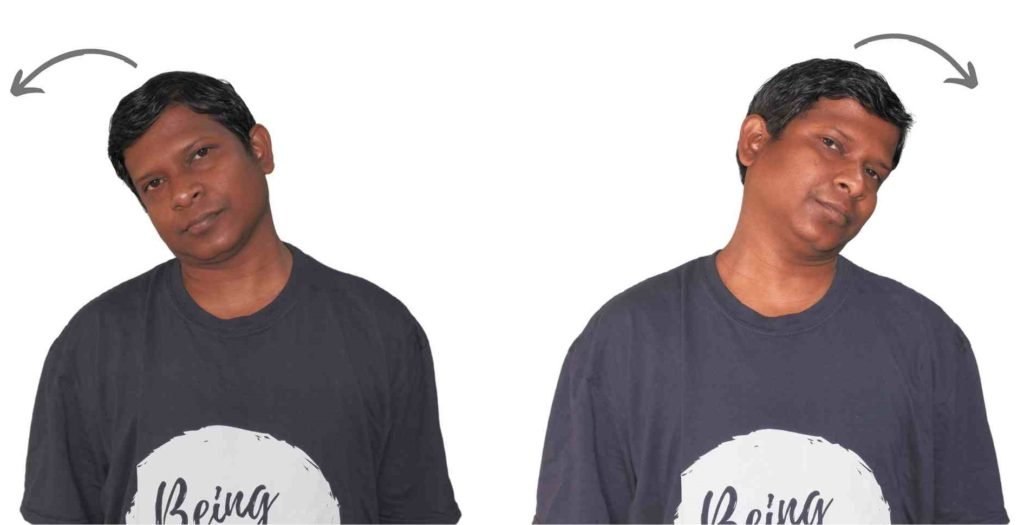
Neck side bending exercises are a simple and effective way to stretch and strengthen the muscles on the sides of your neck. These exercises help improve flexibility, reduce muscle tension, and alleviate neck and shoulder pain.
To perform neck side-bending exercises, follow these steps:
- Sit or stand with your back straight and shoulders relaxed.
- Place your right hand on your right thigh (if seated), or let it hang by your side (if standing).
- Slowly tilt your head towards your left shoulder, feeling a gentle stretch on the right side of your neck.
- Hold the stretch for 15 to 30 seconds while maintaining a relaxed breathing rhythm.
- Return your head to the centre and repeat the exercise on the other side, placing your left hand on your left thigh (if seated) or letting it hang by your side (if standing).
Repeat the exercise 2 to 3 times on each side, gradually increasing the duration of each stretch as your neck becomes more flexible. Remember to perform the movements slowly and avoid any sudden or jerky motions.
6) Neck Strengthening Exercises
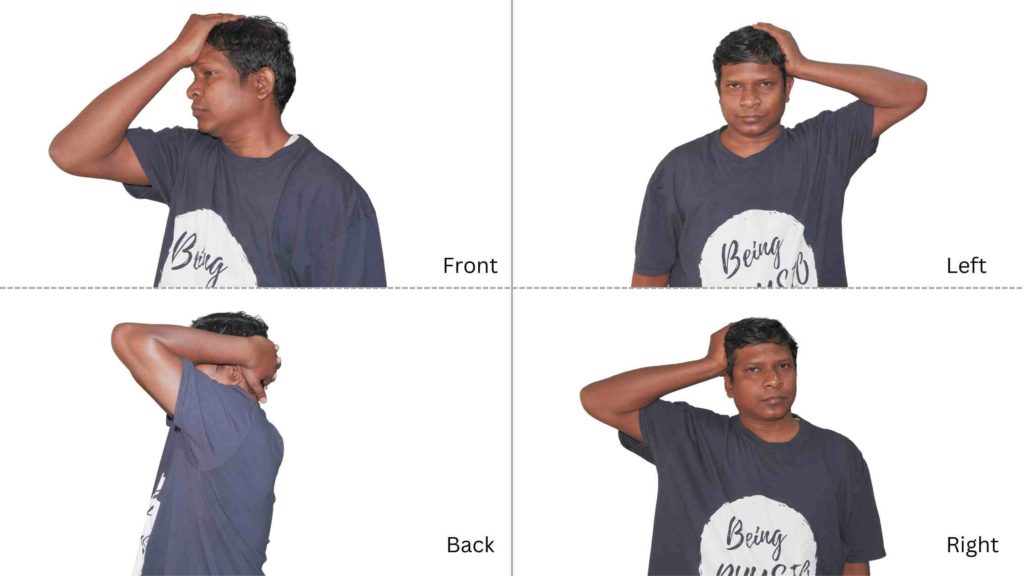
To strengthen your neck muscles, you can do targeted exercises that involve pushing against your forehead with your hand. This exercise targets the front neck muscles, also known as the anterior neck muscles. Here’s how to do it:
- Sit or stand up straight with your shoulders relaxed.
- Place your right hand on your forehead and press your forehead gently against your hand.
- Use your neck muscles to resist the pressure from your hand, pushing your head back slightly.
- Hold this position for 5-10 seconds.
- Relax your neck muscles and repeat the exercise for 2-3 sets of 10-15 repetitions.
To strengthen the muscles on the sides of the neck.
- Begin by placing your right hand on the right side of your head and gently pressing your head to the right while simultaneously resisting the movement with your neck muscles.
- Hold this position for 5-10 seconds and then release.
- Repeat the same movement on the left side, using your left hand to provide resistance.
- Continue alternating sides for 8-12 repetitions on each side.
- As you progress, you can increase the resistance by placing your hand on your forehead and pressing forward or by placing your hand on the back of your head and pressing backwards.
To strengthen the muscles in your back, you can perform an exercise that involves interlocking your hands and placing them behind your head.
- Start by standing or sitting up straight with your hands interlocked and placed at the base of your skull. Your elbows should be pointing outwards, away from your body.
- Next, gently push your head backwards with the resistance of your hands. Hold this position for a few seconds and then release.
- Repeat this exercise for about 10 to 15 repetitions, taking care not to strain your neck or back muscles.
- This exercise targets the muscles between your shoulder blades and can help improve your posture and relieve tension in your upper back and neck.
Final word
We highly recommend performing these exercises for neck pain twice a day – once in the morning and once in the evening. If you experience neck pain with radiation to your arms and forearms, it could be a case of cervical disc bulge. These exercises are highly effective and should provide relief, but if you don’t experience any improvement, we recommend visiting an orthopaedic doctor or a physiotherapist.
